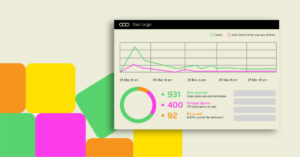What Are Marketing Development Funds?
Marketing development funds (or MDFs for short) are a monetary resource offered by vendors to their third-party resellers. This is mutually beneficial to both vendors and resellers, as resellers are able to expand marketing initiatives and vendors enjoy increased sales and distribution.
By offering good marketing resources such as MDFs, incentives, channel marketing programs, etc, vendors can become preferred by their partners. In most cases, this is a good idea since the vendors are the ones who know their products best and have specific target groups of potential customers they want to sell to. This is commonly done through marketing development funds (or MDFs for short).
In this article, we’ll look at what MDFs are and how useful they can be for both the vendor and the partner reseller.
Typically, MDFs are created when a new brand or product is released in an effort to support its promotion, but they can be used for anything the vendor wants to promote. MDFs are commonly mistaken for co-op funds (or people think they’re the same thing) due to their similarities, but overall, marketing development funds are unique in their own way.
What Are Some Examples of MDFs?
MDFs aren’t a one-size-fits-all solution, and the specific types offered can vary depending on the vendor and their goals. Here are some common examples of MDFs:
- Lead Generation: Feeling stuck finding new prospects? MDF funding for SEO/SEM campaigns, email blasts, or social media marketing can help you attract qualified leads and fill your sales funnel faster. Imagine the boost to your bottom line with a pipeline brimming with potential customers, all thanks to a well-executed MDF marketing development fund program!
- Content Development: Captivate your audience with high-quality content that educates, engages, and converts. Leverage MDFs to create blog posts, white papers, infographics, or even a podcast series – the possibilities are endless! Remember, valuable content attracts attention and builds trust, ultimately leading to more sales for both you and your vendor partner.
- Events: Make a splash at industry conferences, trade shows, or even host your own webinars! MDFs can help you cover the costs of sponsoring events, creating eye-catching booths, or offering exclusive training sessions. By putting your brand in front of the right audience, you’ll generate buzz and drive sales, making the most of your marketing development fund investment.
- Partner Enablement: Empower your sales team with the knowledge and tools they need to succeed. MDFs can fund training programs, sales collateral, or even co-branded marketing materials. A well-trained and equipped sales force is a powerful weapon in your arsenal, and MDFs can help you build that winning team.
- Channel Marketing Programs: Collaborate with your vendor on broader marketing initiatives that benefit both parties. MDFs can contribute to joint advertising campaigns, co-developed case studies, or even influencer marketing partnerships. By working together, you can amplify your reach and achieve greater results than either of you could alone.
Remember, these are just a few examples. The beauty of MDF marketing development funds lies in their versatility.
The Basics of MDFs
There are a couple of important distinctions associated with MDFs that you should know of. Although these can vary wildly depending on the situation, they’re usually a common occurrence. In any case, here are the four primary elements of marketing development funds.
How Do MDF Programs Work?
MDF programs are designed to streamline collaboration between vendors and their partners. Typically, vendors allocate a budget for MDF, and partners then submit proposals outlining their marketing activities and desired funding.
Once proposals are approved, partners execute their campaigns and submit receipts for reimbursement. The process often involves an online portal for managing proposals, approvals, and reporting, ensuring transparency and accountability throughout the program.
Effective MDF programs require clear communication, defined goals, and ongoing tracking to maximize their impact for both parties involved.
1. Payment Timings
MDF claims are generally in the form of retrospective fixed amount payments or volume incentive rebates, so it’s important to have them in your rebate management system. After all, the costs associated with marketing can change on a daily basis.
However, while uncommon, certain MDFs are sometimes paid at the beginning of the arrangement because of specific cash flow considerations from the vendors. In essence, MDFs can be done at any point, and their payouts depend on preference from both sides.
2. Tracking Reliability
Generally speaking, MDFs are used to support specific marketing activities. Vendors provide a fixed amount of money that is supposed to be used for activities that the vendor has stated. Usually, this includes activities such as product launch events and in-store promotions.
At the vendors’ discretion, they can choose to exclude certain activities such as email campaigns and radio advertising, if they deem them ineffective or unnecessary for the marketing campaign.
In cases where some of the provided funds are not used, the vendor will seek to claim back any part of the provided fixed amount once the agreement is done. Using a reliable and accurate channel marketing software is necessary to ensure the success and proof of the agreed marketing activities.
3. MDF Effects on Cash Flow
If an MDF follows the explanations we explained above, then the cash flow can wildly differ between various MDFs. There are numerous methods of creating an MDF with a specific allocation of the resources set forth by the vendor.
In some cases, the vendor may determine what is necessary to complete the marketing campaign and claim back what is left unused.
In others, the vendor could provide a limited financial amount for the vendor to use at their discretion. The vendor then claims each event (in terms of what amount is needed) when the event itself has been completed.
Intricate details are important when we’re talking about MDFs since they need to be adjusted to fit everyone’s ideas. This is one of the main reasons there can be drastic differences between two unique marketing development funds.
4. Claim-backs
There are also unique agreements between the two sides that differ from traditional MDFs. Although uncommon, it isn’t impossible to find an MDF agreement that gives more freedom to the vendor while providing sufficient claimback to the vendor.
In essence, this method involves the vendor spending the MDF on whatever they like (to market specific products or services) but – a part of the full amount needs to be available for claim-back by the vendor.
Claim-back agreements are often based on sales of the marketed services or products, which allows higher rewards for the effectiveness of the marketing campaigns. Certain vendors prefer this method.
How are MDFs Different From Co-op Funds?
Many people use co-op funds and marketing development funds interchangeably, but this is wrong. Each is a distinguished source of funding, and they function differently from one another. It’s important to understand these differences in order to determine which type of fund is best for your business.
Allocation and Timing
MDF is a proactive method of funding certain marketing activities. Most companies tend to provide MDFs before partaking in the marketing or sales processes. Those that use co-op funds do so after these processes have taken place.
So, just to confirm once more – MDFs are proactive, co-op funds are retroactive (a sort of reimbursement).
Ownership
Partners accumulate co-op funds as percentages from sales, so the amount of available co-op funds can differ depending on how successful their sales numbers are. Companies are allowed to come up with certain rules that need to be followed (ie. how the funds should be used), but once the money is sent, there’s no claiming it back.
On the other hand, MDFs are allocated at the partner’s discretion, before any activity begins. Corporate is, in this case, allowed to manage the fund in any way they please, and require reimbursement for any unused funds.
Co-op funds are usually given to high-volume sellers (ie. distributors) which motivates them to keep marketing the service or product. MDFs aren’t as versatile but they’re safer for the vendor and Corporate.
Duration/Length
The last major difference between the two is the duration. Co-op funds are predominantly used for long-term projects and marketing activities, while MDFs are generally used for short-term goals and activities such as tradeshows and one-off webinars.
What Are the Benefits of Marketing Development Funds
1. Incentivize Trade Partners
One of the main benefits that MDFs bring to the table is the ability to increase demand for a company’s products or services by incentivizing their trade partners. Creators are also motivated to start their marketing campaigns for specific products and create a safety net for them.
2. Increase Product Demand
By giving them some freedom of choice and enough resources in the form of a monetary fund, vendors are looking to increase customer demand for a specific product which will, in turn, increase demand for that same product.
3. Increase Market Share
In most cases, this increases the market share. Creators also experience these benefits albeit on a slightly smaller scale. After all, higher customer demand means more sales, and more sales mean more money.
4. Create More Efficient Campaigns
Another benefit is the ability to upsell certain products or services that aren’t currently being marketed. An MDF could transform the creator’s marketing campaign into a much more efficient one, ultimately benefiting all parties.
5. Target Specific Regions and Audiences
MDFs can be applied and targeted to specific geographic locations around the world, making them perfect for unique areas and targeted demographics.
The Challenges of Marketing Development Fund Marketing
Some of the biggest yet easy-to-solve issues surrounding marketing development funds are the occasional lack of transparency. In some rare cases, the MDF agreement may not even exist in any of the records.
The best way to solve these issues is to carefully and precisely keep track of everything that’s happening.
Every piece of information needs to be accurate in order to be beneficial. Automated systems are perfect for this due to time saving and accuracy with which they keep a track record.
Lots of times, the biggest issue with MDFs is utilizing all the information to determine whether or not the marketing campaigns were successful. Having the ability to identify a couple of crucial metrics, including the impact of location, time, and others, can improve your negotiation tactics.
How to Apply for an MDF Program
Looking to apply for an MDF program? Firstly, look into the specific MDF programs your vendor offers. Each program might have different goals, eligibility requirements, and application processes. Familiarize yourself with the details to ensure you’re applying for the right fit.
Next, craft a compelling proposal. Highlight how your marketing efforts align with the vendor’s goals and address specific customer segments. Be clear about your budget needs, desired activities, and anticipated return on investment (ROI). Remember, data and metrics are your friends!
Finally, remember MDF programs are a partnership, not a free ride. Be prepared to contribute your own resources and expertise to make the campaign a success. Communication and collaboration are key!
By following these steps and keeping your vendor’s goals in mind, you’ll be well on your way to securing those valuable marketing development funds and boosting your marketing efforts. Good luck!
Streamline Your Marketing Development Funds with Extu
Extu’s through-channel marketing solutions offer pre-packaged, ready-to-launch campaigns designed for maximum engagement and ROI. Our award-winning content, dedicated success teams, and intuitive technology take the heavy lifting off your shoulders, so you can focus on growing your business.
How Extu Helps You Leverage MDFs Effectively
- Boost partner engagement by 80% with pre-made campaigns that require minimal effort from your partners.
- Increase pipeline revenue by $5M and achieve a 20:1 ROI on your MDF investment.
- Reduce your cost per MQL by 80% with targeted campaigns and lead scoring.
- Gain real-time insights and lead attribution to demonstrate program success and prove your value.
Ready to unlock the true potential of MDFs?
We’ll help you create a winning strategy that engages your partners, drives results, and maximizes your ROI.



